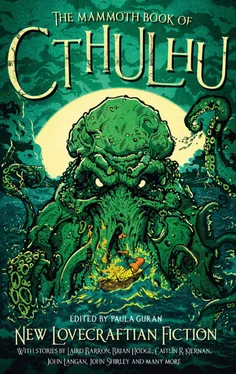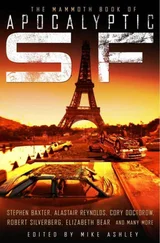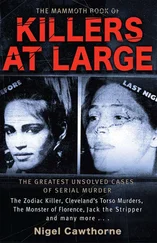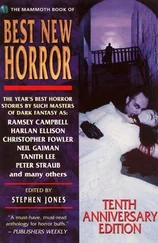Within two years, she was favored to win the heat that would qualify her for a spot on the national team. Her parents and Maya Dommel watched with bated breath from the bleachers as she lined up alongside her unenlightened competitors, the white and gold shooting star emblem emblazoned across her heart. Her gaze was iron as she crouched on the track, flexing her strong, taut tendons. And yet after the gun was fired and the race begun, Zola showed her frailty: she rolled her ankle before completing her first lap, then lay howling on the clay like a grotesque fallen animal. Afterward in the hospital she thrashed and wept and insisted that she could still heal and glorify Saint Sasha, but the Church had seen clearly from this failure of mind and matter that Zola was not a Champion.
Perhaps they would have only remembered Zola as a misdiagnosed contender if the Church had been an ordinary one; but the extraordinary Church of the Holy Star has eaten the flawless eyes of Champion marksmen and sees all things. In this particular instance the Church’s Champion vision moved through Zola’s best friend, Julie Chen, who went to the hospital to deliver a care package and overheard Zola laughing fiendishly with her coach, that deviant mortal man. She was laughing, so Julie told the Church, because apparently Zola could not believe she was such a convincing actress. Once aware of this betrayal, the Church of the Holy Star moved quickly to protect itself. The coach was destroyed with no witnesses in his apartment building, but the false champion Zola Golding slithered out of the reach of the Church’s Justice. It is said that she dwells in a poisoned city across the sea, hiding from the light of the Church and dreading the shame and torture that will befall her on the inevitable Day of Judgment.
Maya Dommel still proclaimed Zola to be an innocent who had been corrupted by her coach, perhaps seduced by his promises of earthly rewards. In dramatic fashion she beat her chest and blamed herself for exposing Zola to the influence of a man who had never been taken into the Church’s fold. But a seed had been planted in the congregants’ minds: perhaps the willing sacrifice was not a sustainable long-term model for their community.
Zola’s good-hearted parents attempted to make amends for their daughter’s sins by sacrificing themselves. Yet while their faith was stellar, their bodies were not; in the end they only succeeded in creating more work for the little old woman who cleaned St. Sasha’s altar.
The treason of Zola Golding shook the foundations of the Church of the Holy Star. The Rising Star Foundation, too, had been embarrassed by her failure to qualify for the Olympics — its mentors and sponsors always stressed to its athletes that they were one enormous family of heroes, and for one of their most-favored sisters to fail so abominably after years of patient, dedicated training cast self-doubt on the entire stable of athletes. The organization did not win a single gold in 1990, and soon a few of its strongest jumped ship to other clubs, citing concerns about Rising Star’s strength and conditioning program. The beloved Reverend Orrin Spell died shortly thereafter of a broken heart and a hungry soul, and in this dark and uncertain time several pillars of the Church journeyed out into the wretched world in search of answers.
One of these pilgrims was Professor Richard “Dick” Kettle, who taught Culture and Power in Ancient Societies, The Living Myth, and Advanced Topics in Shamanism at Rosewood College. He took an academic sabbatical to visit the tropical city of Parkidi, which had just begun construction for the 1994 Olympics, and climbed a nearby hill from whose peak he could see into the entrails of the blossoming Olympic Stadium. There he knelt, lit a small candle, opened his mind, and wept for the beauty of the stadium, the purity of the contest, and the failure of the Church to seize upon its potential. He pled with the known and unknown universe to deliver to him, and so to the Church of the Holy Star, the light.
He waited there for two days, and then a man came up the hill from the city shining with the lights of progress. He was tall and slim, wore a jet-black suit and a sympathetic expression, and introduced himself as Hyperon Talta. He said, “I hear that you are in need of help, Professor. I have something to show you.” Professor Kettle took his hand, and Hyperon showed him a great many wondrous things about the velocity of blood, and the truth of the sword, and the eternally spinning face of God. Hyperon Talta illuminated a truth that the Church had previously been unprepared to see: sacrifice is noble, but conquest is glorious.
Professor Kettle returned to the Church of the Holy Star and convened an emergency meeting that very night. He brought with him Hyperon, who rose and unfolded like an enormous bat from behind St. Sasha’s altar.
“Hold the knife to the throat of weakness.”
Hyperon Talta showed them a god that was boundless and limitless: a reveler god whose name was Azathoth the Ultimate. The name itself opened their cells, reconstructed their nerves. For there is nothing larger, nothing stronger, than Azathoth the Ultimate, eater of worlds, absorber of stars, the one and only universe-straddling Champion. Hyperon showed them golden athletes dancing for this god within a stadium of stars. He taught them the games these athletes played: the plucking of the bloodshot eyes, the clack-rattling of the ribs, the drumming of the skin stretched tight and tense. He sang for them the soul-stirring, adrenaline-pumping cacophony of a thousand cymbals and a million trumpets and a billion raw vocal chords strained hard enough to break: a song that he called The Canticle of the Hunter.
“Come before God and conquer fear.”
Then Hyperon withdrew into his black sleeves and left them to themselves. Nearly all of the Church members threw up their arms in revelation. “Have you ever seen a more perfect vision of victory?” cried Professor Kettle, and the congregants confirmed the answer to be no. Not even those who had witnessed St. Sasha’s first, primitive sacrifice could claim not to be moved more violently by this vision.
As always, there were skeptics. Maya Dommel shouted, “There is always another side! He calls it the Canticle of the Hunter. What is that? Who is the Hunter? If we are the Hunters then who are the Hunted?”
Professor Kettle, standing at the pulpit, wisely proclaimed: “If you wish to be one of the Hunted, Maya Dommel, then there is none among here who can help you, and you should never have been taken into St. Sasha’s flock. She conquered all there was to conquer. She would never have been Hunted, by anyone.”
And so the Church split between those who heeded the guidance of Hyperon Talta, and those who refused to deviate from a tradition that was evidently failing the community. Red-haired Maya Dommel, who proudly took the title Apostle, led the heretics away from the Church of the Holy Star like the Pied Piper stole children — she even lured away the great-nephew of Reverend Orrin Spell, young James “Jimmy” Spell. These shadow-cast stragglers gathered their worldly possessions and drove to the other end of the nation, and in a city of empty factories — near a colossal football stadium that lay gutted to the sky like a dead whale — they established a house of sin and worship that they called the First Church of the Star.
Well into 1993, the First Church of the Star continued to recruit human sacrifices. With their siren songs they encouraged elite-level competitors in basketball, hockey, and baseball to lay down their lives in honor and celebration of the sublime. Eventually, this legion included the starting wide receiver of the team with the wolf herald that played in the dead whale stadium, a passionately religious young man named Henry LaCloak. Henry carried so much finely seeded muscle mass in his gunner’s arms that he had to get his dress shirts custom-made. He was also the spiritual leader of his team: it was he who organized pancake and sausage fundraisers, and he who invited the team to join him in mass prayer upon their knees in the traditional Abrahamic style. He had about him an abundance of ritual, including pointing skyward after successful catches and repeated verbal genuflection toward a “Lord” and “Big Man in the Sky.”
Читать дальше












